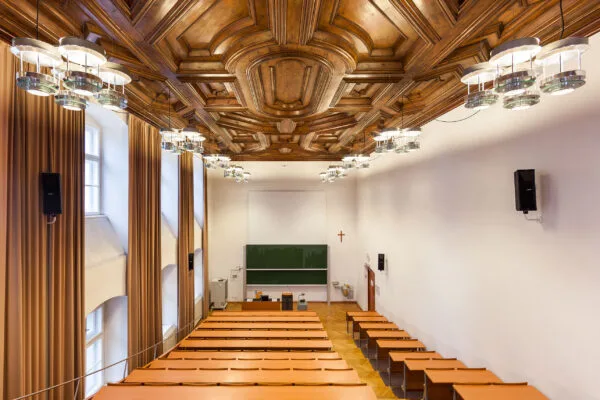
NAME:
Theologie - HS 1
BUILDING:
Theologie
FLOOR:
1
TYPE:
Lecture Hall
CAPACITY:
126
ACCESS:
Only Participants
EQUIPMENT:
Beamer, PC, WLAN (Eduroam), Overhead, Blackboard, Handicapped Accessible, LAN, Microphones, Sound System, Speaker Desk
Natural capital refers to the stock of renewable and non-renewable natural resources on Earth—such as plants, animals, air, water, soil, and minerals—that combine to yield a flow of benefits or services to society. This study evaluates the natural capital of two public mountain resorts in the Catalan Pyrenees, Vall de Núria and La Molina, using the Natural Capital Protocol (NCP) and the System of Environmental-Economic Accounting (SEEA). We integrated reviewed literature, GIS data, and field-collected data (a) to assess key dependencies, impacts, risks, and opportunities related to natural capital at these resorts; (b) to develop materiality matrices to identify the importance of natural capital components (e.g., water, forests, pastures) for both resorts and social stakeholders, based on workshops and questionnaires; and (c) to propose science-based recommendations for actions, including sustainable practices and nature-based solutions (e.g., habitat protection, restoration, or sustainable management). Such solutions aim (i) to enhance the resorts’ natural ecosystems by expanding its extent and improving its condition, while addressing potential socio-ecological trade-offs, (ii) to increase local socio-ecological resilience, and (iii) to support adaptation and mitigation to global change, i.e., climate change, land use change, and invasive alien species. Our research provides valuable insights for decision-makers and land managers in developing sustainable strategies for the management of ski and mountain resorts, since it helps preventing natural capital loss while recognising and optimising the potential of applying the “nature as business” approach. By integrating our approach into decision-making, resorts can enhance environmental sustainability, reduce their ecological footprint, and increase the viability of tourism activities without generating excessive impact on the ecosystems in use. This study offers a replicable model for other mountain regions that face challenges such as biodiversity loss, natural capital degradation, and the conservation of ecosystems impacted by tourism.

Notifications